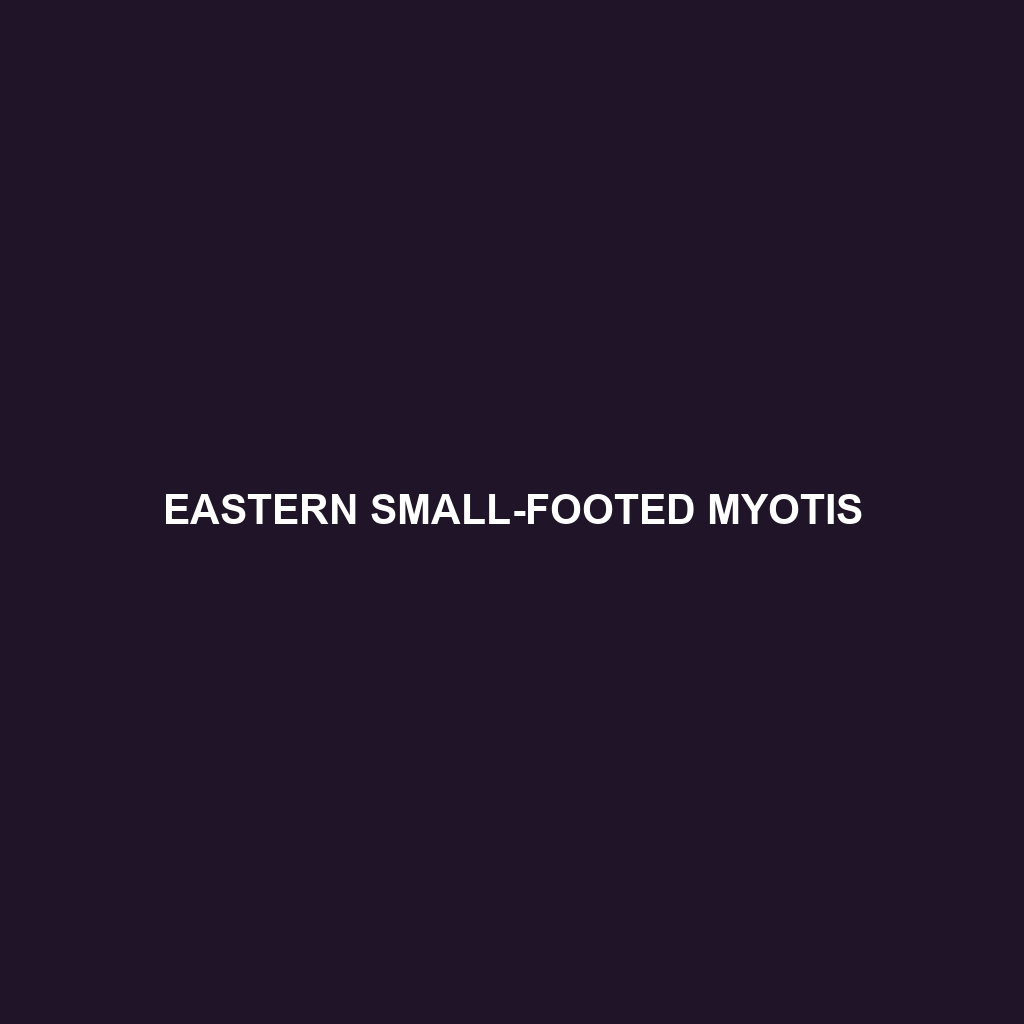Eastern Small-footed Myotis
Common Name: Eastern Small-footed Myotis
Scientific Name: Myotis leibii
Habitat
The Eastern Small-footed Myotis is primarily found in eastern regions of North America, particularly in areas that include the Appalachian Mountains, the northeastern United States, and parts of Canada. This species typically inhabits rocky outcrops, forested regions, and caves. They prefer high elevations and often roost in crevices and under rocks, utilizing the natural landscape to their advantage.
Physical Characteristics
The Eastern Small-footed Myotis is a small bat, weighing between 5 to 8 grams and measuring approximately 3.1 to 3.5 inches in body length. Its fur is a distinct brownish color, with a lighter underbelly that can vary from pale to almost white. A key identifying feature is its small feet, which gives the bat its common name. The wingspan can reach up to 10 inches, and they possess short, rounded ears that aid in echolocation.
Behavior
This bat is nocturnal and is most active during dusk and dawn. During the day, Eastern Small-footed Myotis roosts alone or in small groups in crevices and caves. They exhibit a unique form of flight pattern, often darting quickly between obstacles while foraging for insects. This behavior not only helps them capture prey but also enables them to navigate their rocky habitats with agility.
Diet
The diet of the Eastern Small-footed Myotis primarily consists of small flying insects, including moths, beetles, and mosquitoes. They utilize echolocation to detect and capture their food, feeding mainly in or near their roosting areas, which can enhance their foraging efficiency. This feeding behavior plays a significant role in controlling insect populations in their habitats.
Reproduction
The Eastern Small-footed Myotis typically breeds in late summer, with females giving birth to one pup each year. The gestation period is approximately 50 to 60 days. Pups are born hairless and depend on their mothers for warmth and nourishment. By the time they reach 4 to 5 weeks of age, the young bats are capable of flying and begin to forage for food independently.
Conservation Status
The Eastern Small-footed Myotis is currently listed as vulnerable due to habitat loss and the impact of white-nose syndrome, a disease devastating bat populations across North America. Conservation efforts are crucial for the preservation of this species, particularly in protecting their natural habitats and monitoring disease spread.
Interesting Facts
One fascinating fact about the Eastern Small-footed Myotis is their small size, making them one of the smallest bats in North America. Their ability to navigate complex terrains and their preference for high-altitude habitats set them apart from other bat species. Additionally, they are known for their relatively long lifespan compared to other small mammals, often living over 10 years in the wild.
Role in Ecosystem
The Eastern Small-footed Myotis plays an integral role in its ecosystem by controlling insect populations. As a natural predator of various insects, it helps maintain balance in the food web. Furthermore, the species serves as an important food source for larger predators, contributing to the biodiversity of its habitat.
